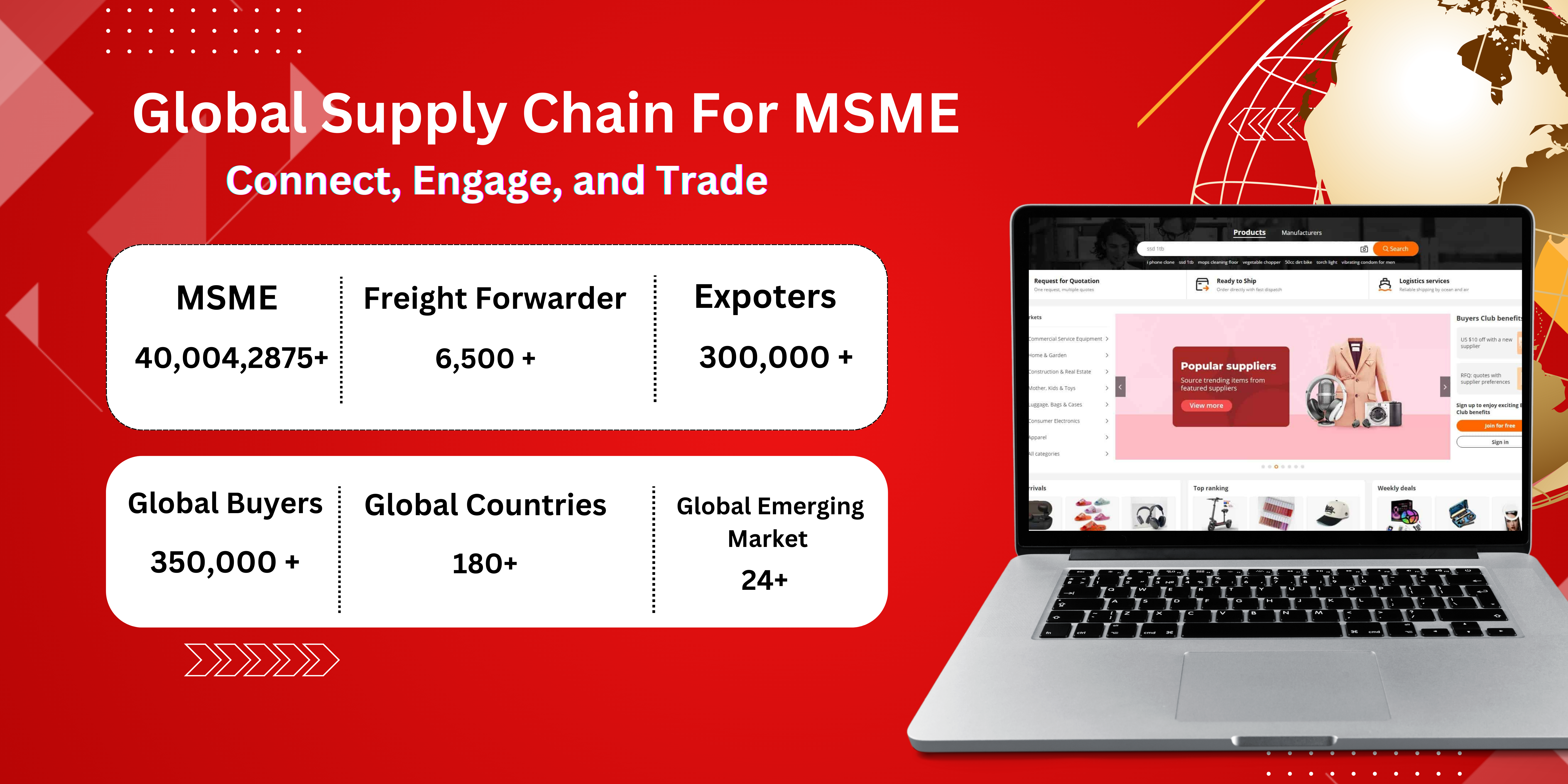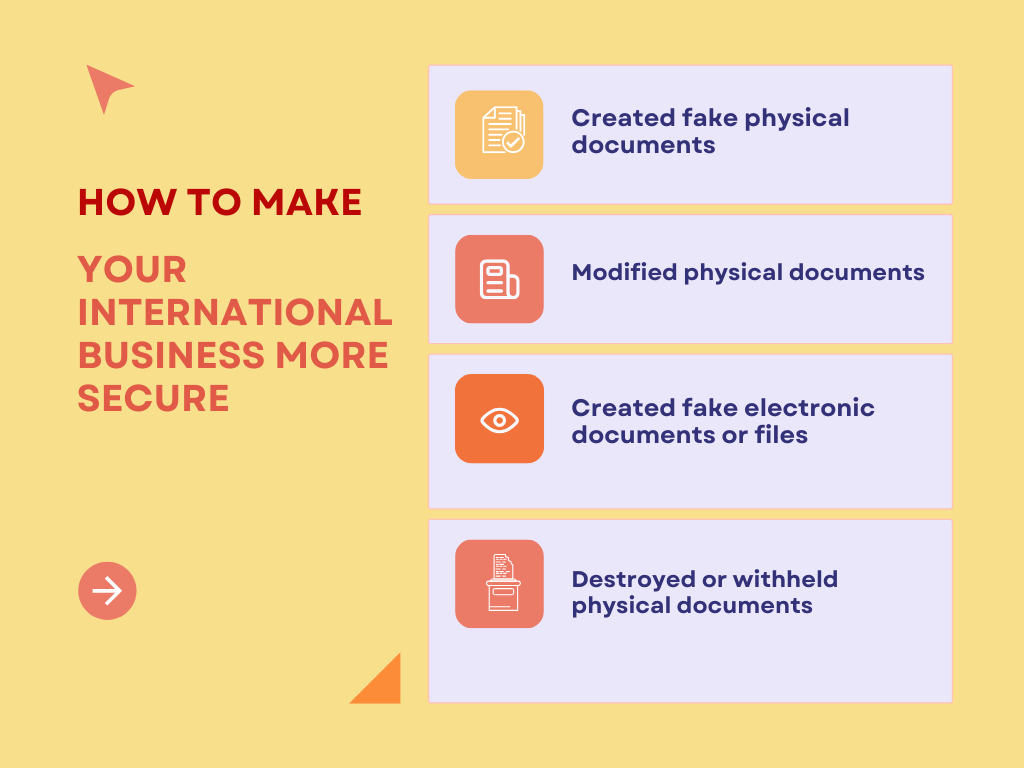
The One Stop Solution
B2B Services
Fastrider’s Fraud Detection system is designed to protect the integrity of its supply chain operations by identifying and mitigating risks from fraudulent activities.
Real-Time Transaction Monitoring
Continuously monitors transactions for anomalies like duplicate invoices or payment discrepancies..
Behavioral Analysis of Vendors
Tracks vendor activities and flags high-risk behaviors for proactive fraud detection.
Risk Scoring and Alerts
Assigns risk scores to vendors and sends alerts for high-risk actions needing review.
Anomaly Detection with Machine Learning
Uses machine learning to detect unusual patterns and adapt to new fraud trends
Automated Compliance Verification
Ensures vendor compliance with international standards and regulatory requirements.
Supplier Background Verification
Conducts background checks for suppliers, particularly for high-risk regions, ensuring trustworthiness.
Vendor Documentation Validation
Automatically verifies and validates important documents, like licenses and certifications, reducing fraud risk.
Cross-Border Verification Tools
Confirms vendor legitimacy with global database checks for secure international trade.
Regulatory Compliance Audits
Automatically conducts compliance audits on suppliers to verify adherence to trade regulations.
Document Fraud for International Trade
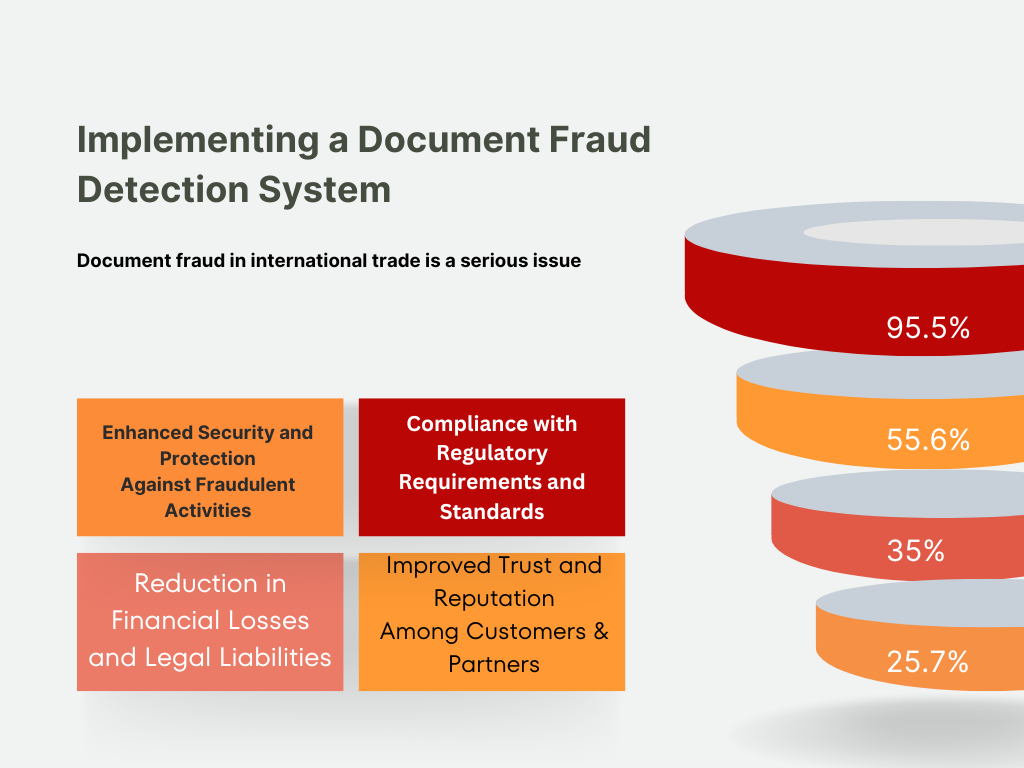
Document fraud in international trade is a serious issue where critical trade documents are falsified, altered, or misrepresented, often leading to significant financial losses and reputational damage.
Advance Fee Fraud for International Trade
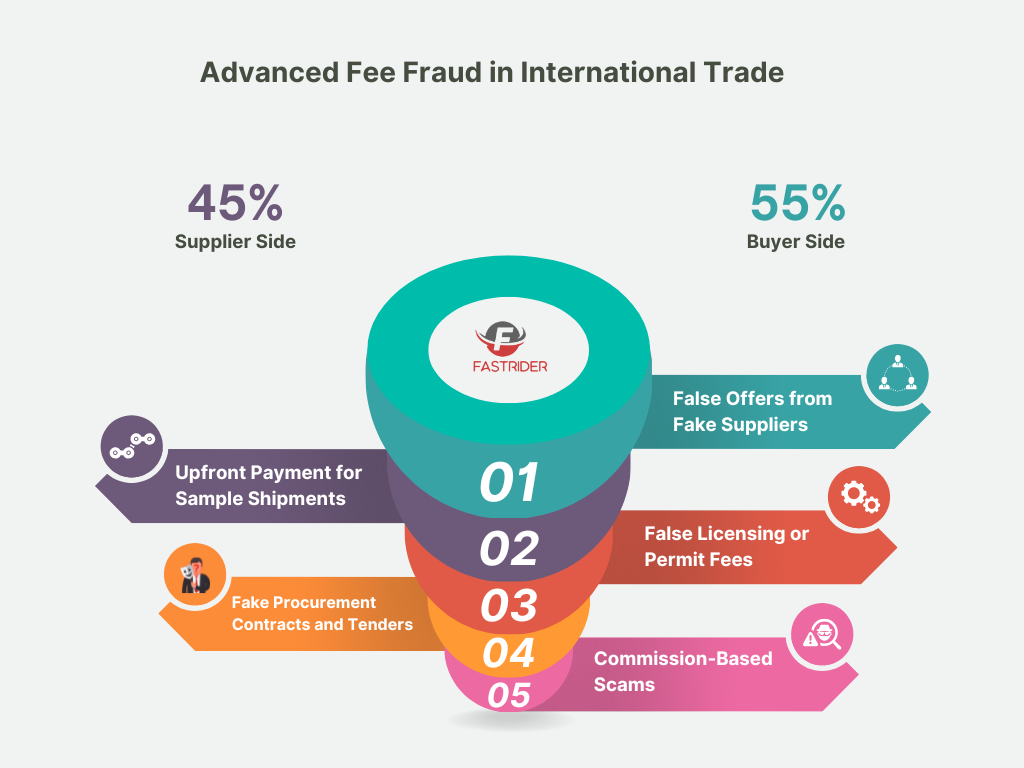

Advance fee fraud is a common risk in international trade where scammers require upfront payments or fees under false pretenses, promising goods or services that are never delivered. This type of fraud can cause significant financial loss and disrupt supply chain relationships
- Substandard Goods
- Phony Pre-shipment Expenses
- False Requests for Urgent Fees
- Bogus Permit and Licensing Fees
- Sample Request Fees
- Scams Involving Shipping and Handling Fees
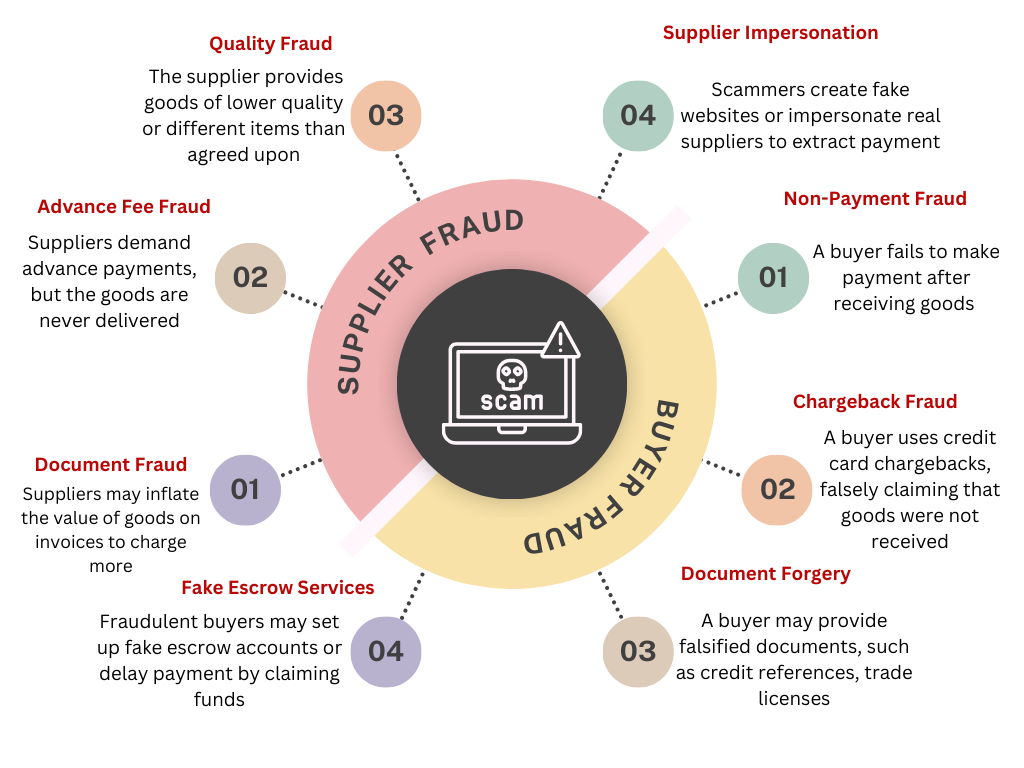
Quality Fraud for international trade

Quality fraud in international trade occurs when suppliers misrepresent the quality, specifications, or authenticity of the goods being sold. This can lead to significant financial losses, damaged reputations, and strained trade relationships
Know About Us- Substandard Goods
- Counterfeit Products
- Mislabeling and Repackaging
- Fake Quality Certifications
- Weight and Quantity Manipulation
- Substitution with Inferior Raw Materials
- Partial Delivery of Quality Goods
Supplier Impersonation and Fake Companies for International Trade
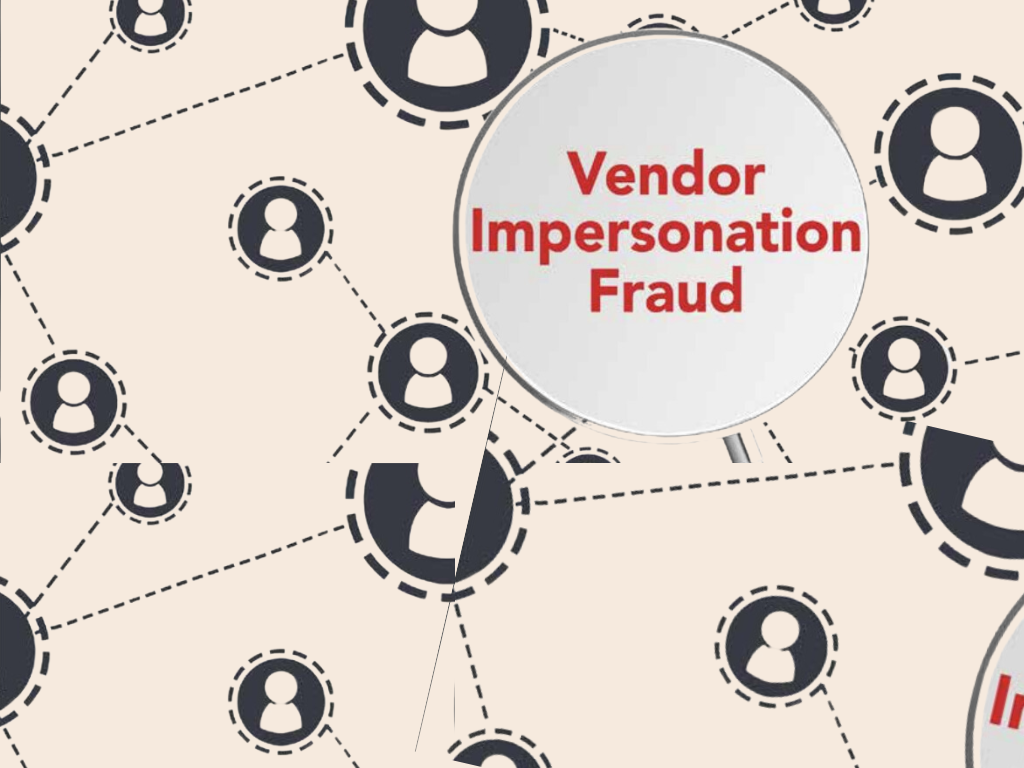
Supplier impersonation and fake companies pose a serious threat in international trade, where scammers create fictitious businesses or impersonate legitimate suppliers to deceive buyers.
- Fake Companies
- Supplier Impersonation
- Middleman Impersonation
- Fake Documents and Certificates
- Email and Website Spoofing
Cyber Fraud for international trade
Cyber fraud in international trade leverages digital vulnerabilities to deceive or manipulate businesses into financial losses, data breaches, and operational disruption. This type of fraud can occur at various stages of the trade cycle and often involves tactics that target both technical systems and human behavior.
- Business Email Compromise (BEC)
- Invoice Fraud
- Phishing Attacks
- Fake Shipping Notifications and Tracking
- Cyber Espionage and Intellectual Property (IP) Theft
- Man-in-the-Middle (MitM) Attacks
- Supply Chain Cyber Attacks
- Ransomware Attacks
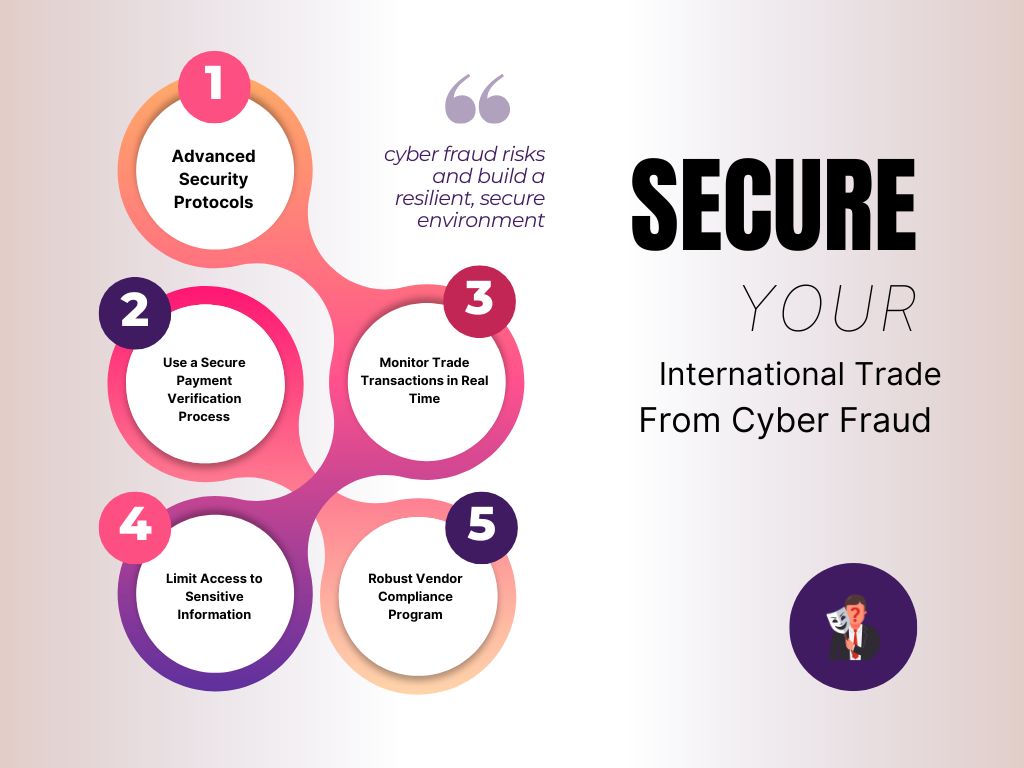
Payment Fraud for International Trade
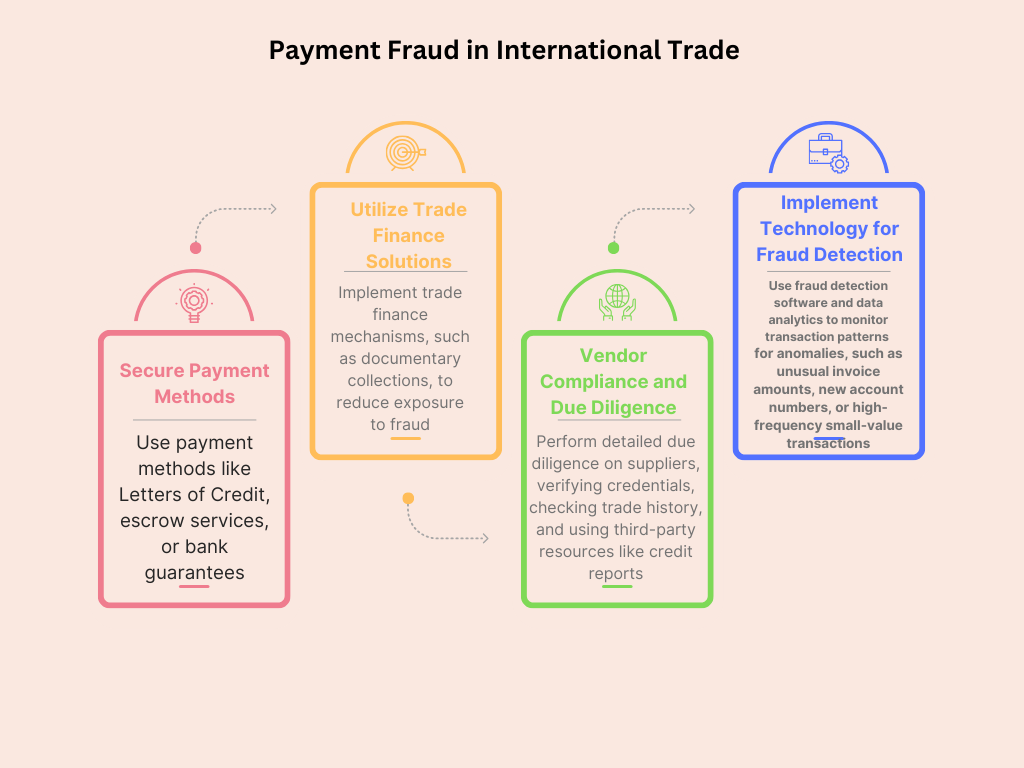
Payment fraud in international trade is a significant threat that disrupts financial transactions, jeopardizes trust, and can severely impact a company’s profitability.
- Fake Payment Instructions (Business Email Compromise)
- Prepayment Fraud
- Invoice Fraud (Fraudulent Invoicing)
- Double Invoicing
- Overpayment Fraud
- False Claims for Refunds
- Fake Escrow Services
Freight and logistics fraud in international trade
Freight and logistics fraud in international trade encompasses various tactics used by fraudulent actors to manipulate shipments, overcharge, or deliver substandard services, resulting in financial losses and operational disruptions.
- False or Inflated Shipping Charges
- Fake or Non-Existent Shipments
- Cargo Theft and Diversion
- Delivery of Damaged or Substandard Goods
- Double Billing and Duplicate Invoicing
- Misclassification of Goods to Avoid Duties
- Phantom Freight Charges
- Fraudulent Forwarders or Brokers
- Use of Unregistered or Low-Quality Carriers

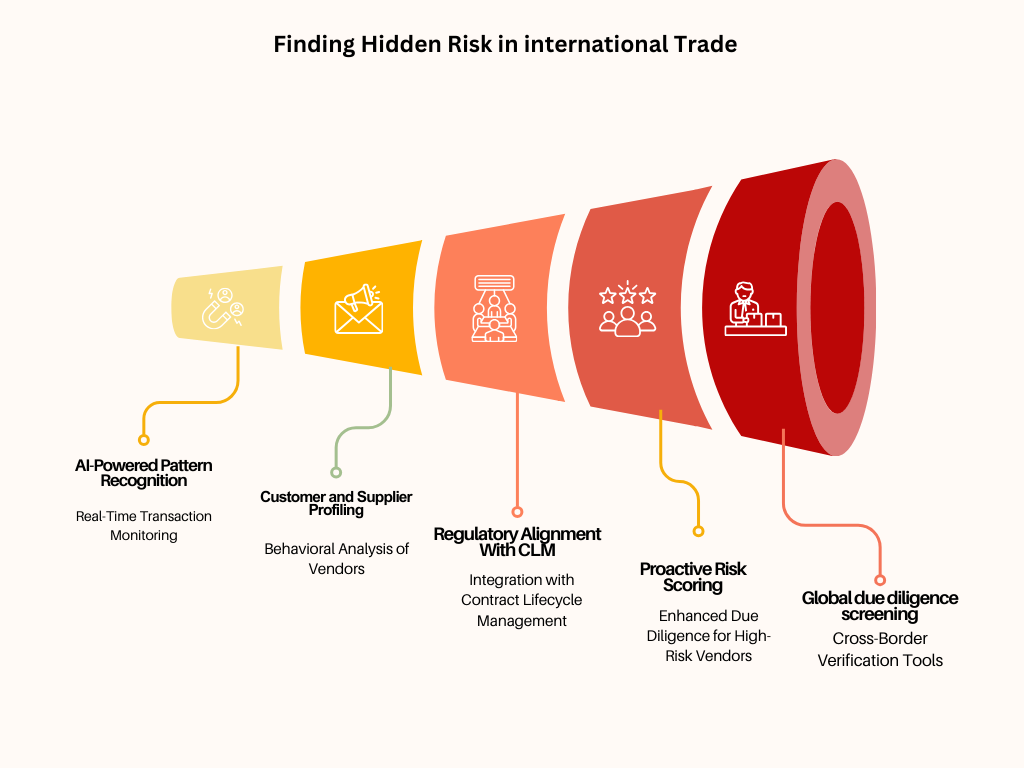
Implementing Buyer Market Fraud in International Trade
Buyer Market Fraud in International Trade involves deceptive practices where buyers exploit their stronger market position to defraud suppliers. Common tactics include manipulating payment terms, falsifying information about their purchasing capacity, or creating false claims of defective goods to demand unjustified discounts or refunds. In some cases, fraudulent buyers may place large orders with no intention of payment, or they may use fake identities and untraceable bank accounts. This type of fraud undermines supplier trust, incurs financial losses, and can damage long-term international trade relationships..


Supplier Market Fraud in International Trade
Supplier Market Fraud in International Trade refers to deceptive practices by suppliers aimed at exploiting buyers in the global marketplace. This type of fraud can manifest in various forms, including misrepresentation of product quality, delayed shipments, or providing counterfeit goods. Suppliers may also engage in tactics such as overcharging for products or services, submitting false invoices, or failing to adhere to contractual terms. Such fraudulent activities undermine trust in international trade, lead to significant financial losses for buyers, and disrupt supply chains. To mitigate the impact of supplier market fraud, businesses must implement rigorous verification processes, enforce strict quality control measures, and establish clear contractual agreements to protect their interests.
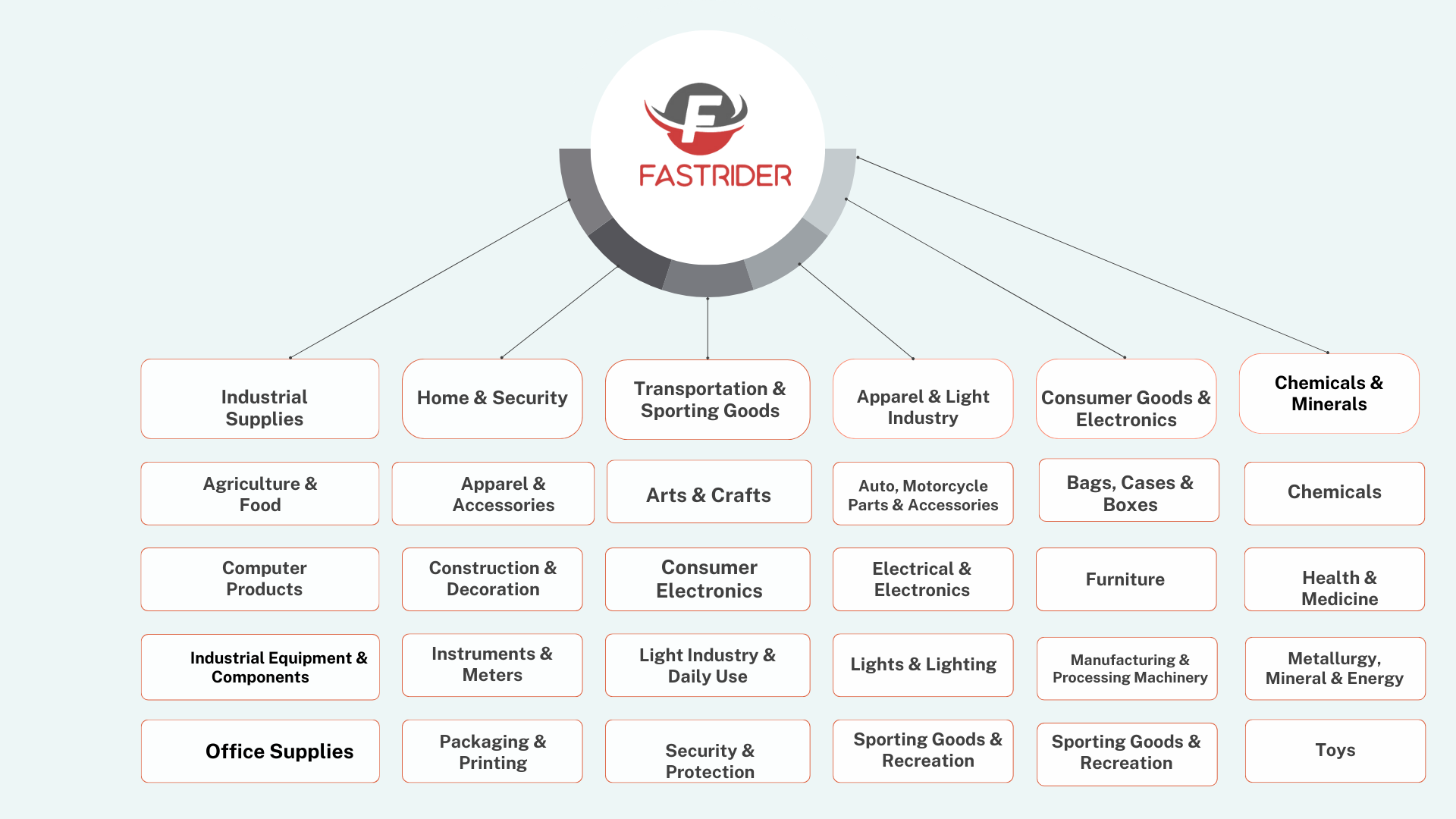
Supported By



